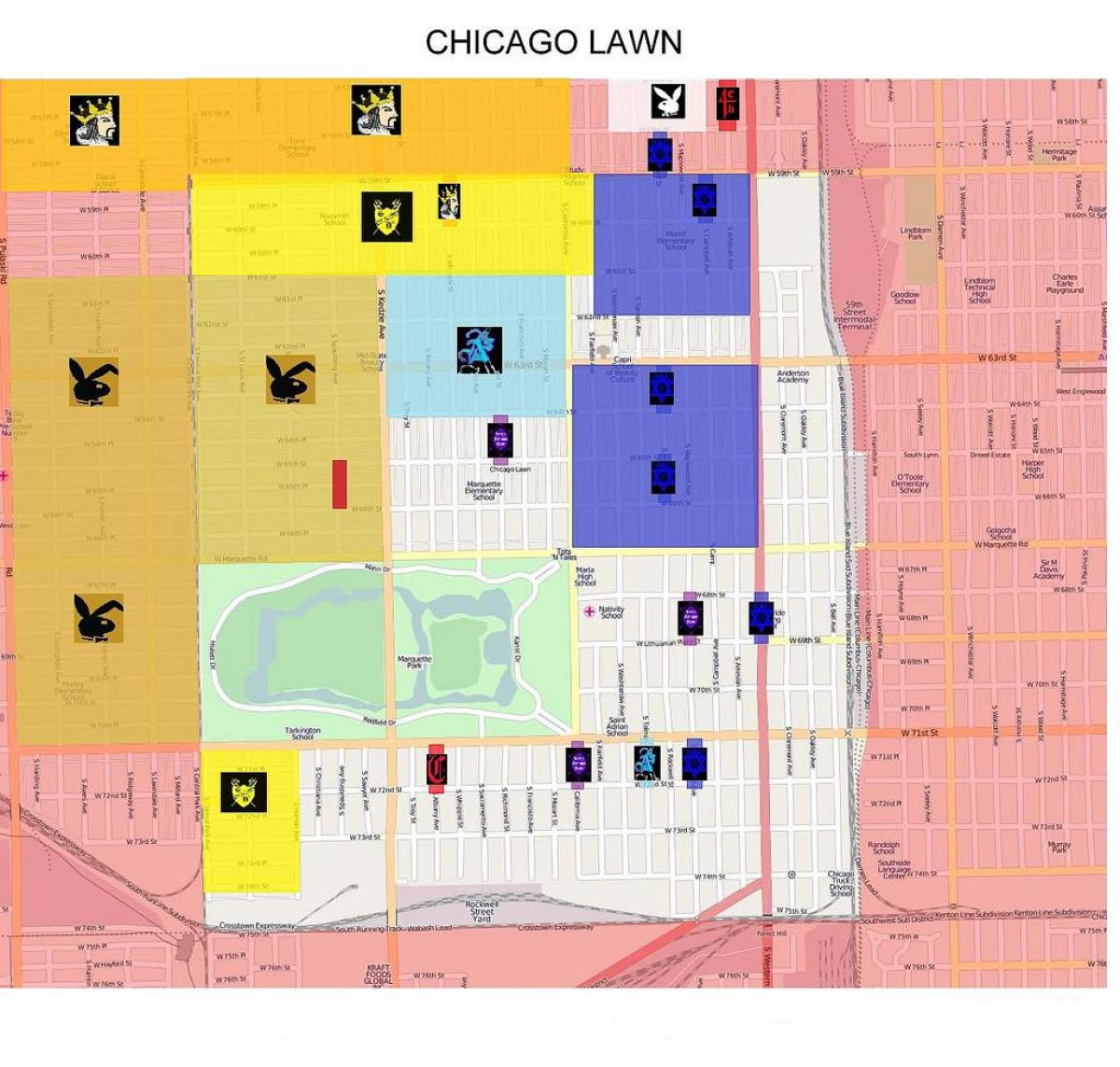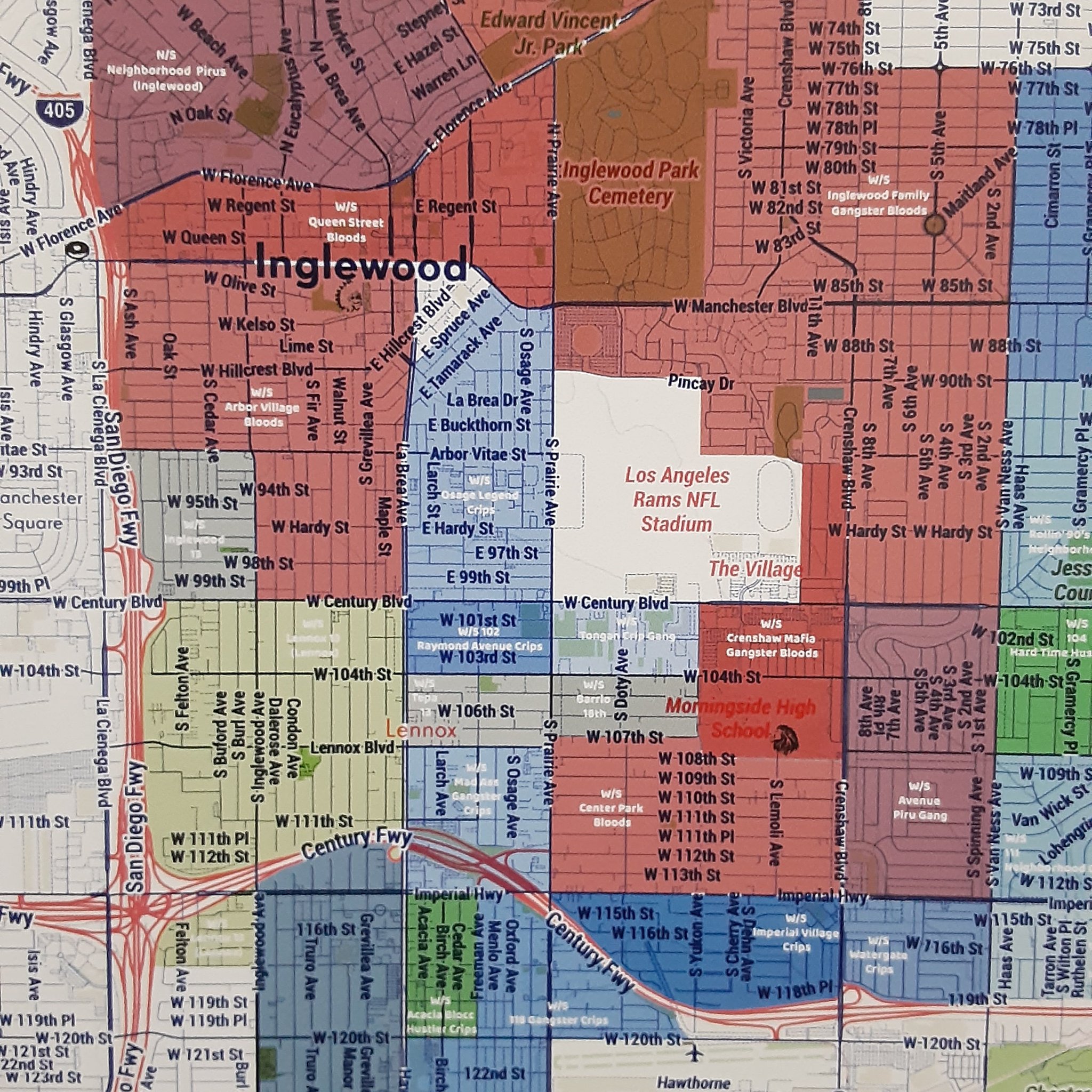Gang Map: Your Ultimate Guide To Unveiling The Streets And Secrets
Imagine this—you're walking down a dimly lit alley, the sound of footsteps echoing off brick walls, and suddenly, you're in the heart of an underground world. This is where the concept of gang maps comes alive. Gang maps aren’t just about marking territories; they’re a window into the hidden layers of urban life, crime, and culture. Whether you're a curious historian, a crime enthusiast, or simply someone who wants to understand how cities function in the shadows, this guide is here to break it all down for you.
Now, let’s not sugarcoat it—gang maps can be controversial. They represent the darker corners of society, but they also serve as tools for understanding criminal networks and preventing violence. By exploring the origins, significance, and applications of gang maps, we’ll give you a deeper insight into why they matter in today’s world. So buckle up, because we’re diving headfirst into the gritty reality of gang mapping.
Before we dive too deep, remember that knowledge is power. Understanding gang maps isn’t just about satisfying your curiosity—it’s about staying informed and safe. Whether you're a student researching urban sociology, a law enforcement officer mapping out crime zones, or even a gamer exploring virtual worlds, this guide has something for everyone. Let’s get started!
Read also:Exploring The Influence Of Lays Peace Erome On Modern Society
What Exactly Are Gang Maps?
Gang maps, at their core, are visual representations of gang territories within a specific area. These maps outline boundaries, hotspots, and sometimes even alliances or rivalries between gangs. While they might sound like something out of a movie, gang maps are very real and used by both law enforcement agencies and researchers to study criminal activity. But how did they come to be?
Back in the day, gang maps were hand-drawn sketches shared among cops and community leaders. Today, with the help of technology, these maps have evolved into sophisticated digital tools that incorporate data analytics, satellite imagery, and real-time updates. For instance, cities like Los Angeles and Chicago use advanced GIS (Geographic Information System) software to create detailed gang maps that help predict and prevent crime.
But here’s the kicker—gang maps aren’t just for cops. They’re also used by social workers, urban planners, and even schools to identify high-risk areas and allocate resources effectively. In short, gang maps are more than just lines on a map; they’re a powerful tool for understanding complex social dynamics.
Why Are Gang Maps Important?
Let’s break it down. Gang maps play a crucial role in several areas:
- Crime Prevention: By identifying gang territories, law enforcement can deploy resources more efficiently and prevent violent outbreaks.
- Community Safety: Maps help communities understand which areas are safe and which ones to avoid, ensuring better public safety.
- Research and Education: Scholars and students use gang maps to study urban crime patterns and develop strategies to combat them.
- Urban Planning: City planners use gang maps to design safer neighborhoods and implement programs aimed at reducing gang activity.
Without gang maps, many of these efforts would be like trying to navigate a maze blindfolded. It’s all about having the right information at the right time.
The History Behind Gang Maps
Gang maps haven’t always been the high-tech marvels they are today. In fact, their origins date back to the early 20th century when organized crime began to take root in American cities. Back then, maps were simple, often drawn on paper or chalkboards, and relied heavily on word-of-mouth intelligence.
Read also:Chinese New Year 1985 Animal A Year Of The Ox And What It Means
As crime evolved, so did the tools used to track it. The 1980s saw the rise of computerized systems, allowing police departments to store and analyze data more effectively. Fast forward to today, and we’re talking about AI-driven platforms that can predict crime patterns with uncanny accuracy.
But it’s not just about technology. The evolution of gang maps reflects broader changes in society—how we approach crime, how we engage with communities, and how we balance security with privacy. Understanding this history gives us a clearer picture of why gang maps are so important in the modern era.
Key Players in the World of Gang Mapping
So, who’s behind the creation and maintenance of gang maps? Here are some of the key players:
- Law Enforcement Agencies: Police departments are the primary users of gang maps, using them to track criminal activity and deploy resources.
- Social Services: Organizations focused on youth outreach and rehabilitation use gang maps to target areas most in need of intervention.
- Academics and Researchers: Scholars studying urban crime rely on gang maps to analyze trends and develop theories.
- Technology Companies: Firms specializing in GIS and data analytics provide the tools and platforms that power modern gang mapping.
It’s a collaborative effort that brings together experts from various fields to tackle one of society’s most pressing issues.
How Are Gang Maps Created?
The process of creating a gang map is far more complex than you might think. It involves gathering data from multiple sources, analyzing it, and presenting it in a way that’s both accurate and actionable. Here’s a step-by-step breakdown:
Step 1: Data Collection
This is where it all begins. Law enforcement agencies collect data from police reports, arrests, and community tips. In some cases, they even rely on informants within gangs themselves. The goal is to gather as much information as possible about gang activity, including:
- Gang names and affiliations
- Territory boundaries
- Known members and leaders
- Hotspots for criminal activity
Technology plays a huge role here. Tools like CCTV cameras, license plate readers, and social media monitoring software help gather real-time data that’s crucial for creating accurate maps.
Step 2: Data Analysis
Once the data is collected, it needs to be analyzed. This is where experts in criminology and data science come in. They use advanced algorithms to identify patterns, connections, and trends within the data. For example, they might discover that certain gangs are more active during specific times of the year or that certain types of crimes are more prevalent in particular neighborhoods.
But it’s not just about numbers. Analysts also consider qualitative data, such as interviews with former gang members or observations from community leaders. This holistic approach ensures that the maps are as comprehensive as possible.
Step 3: Map Creation
Finally, the data is transformed into a visual format. Modern gang maps are often interactive, allowing users to zoom in on specific areas, view historical data, and even simulate different scenarios. Platforms like Esri and ArcGIS are commonly used for this purpose, offering features like heatmaps, layering, and 3D visualization.
And let’s not forget the importance of accuracy. Maps are regularly updated to reflect changes in gang dynamics, ensuring that they remain relevant and useful.
Controversies Surrounding Gang Maps
While gang maps are undoubtedly valuable, they’re not without their critics. One of the biggest concerns is the potential for misuse. For instance, if a map falls into the wrong hands, it could be used to target or retaliate against rival gangs. There’s also the issue of privacy—many people feel uncomfortable knowing that their neighborhood is being mapped and analyzed.
Another criticism is that gang maps can perpetuate stereotypes and stigmas. By labeling certain areas as “gang territory,” there’s a risk of creating a self-fulfilling prophecy where those areas become even more dangerous. Some argue that resources should be directed towards addressing the root causes of gang activity, rather than simply mapping it.
Despite these concerns, most experts agree that the benefits of gang maps outweigh the risks. The key is to use them responsibly and ethically, ensuring that they’re part of a broader strategy to combat crime and improve community safety.
Addressing Ethical Concerns
So, how do we address these ethical concerns? Here are a few suggestions:
- Transparency: Make sure that communities are aware of how gang maps are being used and who has access to them.
- Community Involvement: Engage residents in the mapping process to ensure that their voices are heard and their concerns are addressed.
- Regulation: Implement policies and guidelines to prevent the misuse of gang maps and protect individual privacy.
By taking these steps, we can ensure that gang maps are used as a force for good rather than harm.
Real-World Applications of Gang Maps
Now that we’ve covered the basics, let’s look at some real-world examples of how gang maps are being used today. In Los Angeles, for instance, the LAPD uses gang maps to track rivalries between gangs like the Bloods and the Crips. By analyzing these maps, they’ve been able to reduce gang-related violence by over 20% in certain areas.
In Chicago, gang maps have been instrumental in identifying “hot spots” for gun violence. By deploying additional officers to these areas during peak times, the city has seen a significant decrease in shootings and homicides.
Even in the gaming world, gang maps have found a place. Games like Grand Theft Auto and Red Dead Redemption use realistic gang maps to enhance the player experience, offering a glimpse into the world of organized crime.
Future Trends in Gang Mapping
Looking ahead, the future of gang mapping looks bright—or should we say, tech-savvy. Advances in AI and machine learning are set to revolutionize the field, allowing for even more accurate and predictive maps. Imagine a system that can forecast where and when a gang-related incident is likely to occur, giving law enforcement the ability to intervene before it happens.
There’s also the potential for integrating gang maps with other data sources, such as economic indicators and social media trends, to gain a more complete picture of urban dynamics. The possibilities are endless, and the impact could be transformative.
Challenges in Gang Mapping
Of course, no technology is perfect, and gang mapping is no exception. One of the biggest challenges is keeping maps up-to-date. Gang territories can shift rapidly, especially in cities with high levels of migration or gentrification. This requires constant monitoring and updates, which can be resource-intensive.
Another challenge is the sheer volume of data involved. With so much information to process, there’s always the risk of errors or inaccuracies creeping in. That’s why it’s crucial to have skilled analysts and robust quality control processes in place.
Finally, there’s the issue of access. Not all communities have the resources or expertise to create and maintain gang maps. Bridging this gap will require collaboration between governments, private companies, and non-profit organizations.
Overcoming These Challenges
So, how do we overcome these challenges? Here are a few ideas:
- Invest in Technology: Allocate funding for the development of more advanced and user-friendly gang mapping tools.
- Train Personnel: Provide training programs for law enforcement officers, analysts, and community leaders to ensure they can use these tools effectively.
- Encourage Collaboration: Foster partnerships between different stakeholders to share resources and expertise.
By addressing these challenges head-on, we can ensure that gang maps continue to evolve and improve.
Conclusion: The Power of Knowledge
In conclusion, gang maps are a powerful tool for understanding and addressing the complex issue of gang activity. From their humble beginnings as hand-drawn sketches to their current status as cutting-edge digital platforms, gang maps have come a long way. But they’re more than just tools—they’re symbols of our commitment to creating safer, more informed communities.
So, what can you do? If you’re a student, consider studying urban sociology or criminology to gain a deeper understanding of gang dynamics. If you’re a community leader, advocate for the use of gang maps in your area. And if you’re just a curious individual, stay informed and engaged in the conversation.
Remember, knowledge is power. And when it comes to gang maps, that power can make a real difference in the world. So share this article, leave a comment, and let’s keep the conversation going!


